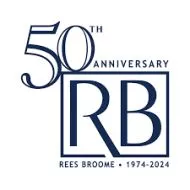As you may know, the District of Columbia and Maryland have adopted Building Energy Performance Standards (BEPS) that apply to many of our condominium clients.
In D.C., the Clean Energy DC Omnibus Act of 2018 ("the D.C. Act") requires all privately owned multifamily buildings to measure and report energy and water benchmarking data to the D.C. Department of Energy and Environment ("DOEE") by April 1 of each year (although there was an extension to July 1 for the 2024 reporting deadline). The reporting requirements have been phased based on the size of the building. The reporting requirement for multifamily buildings:
- over 50,000 sq. ft. began in 2014 (for 2013 data);
- between 25,000 sq. ft. and 49,999 sq. ft. began in 2022 (for 2021 data); and
- for buildings between 10,000 sq. ft. and 24,999 sq. ft. the reporting begins in 2025 (for 2024 data).
In Maryland, pursuant to the Climate Solutions Now Act of 2022 ("the MD Act"), starting in 2025, owners of covered buildings will be required to report energy data to the Maryland Department of the Environment ("MDE"). Per the MD Act, a covered building includes multifamily residential buildings that are 35,000 sq. ft. and larger (excluding garages). The first report is due by June 1, 2025 (for 2024 data) and thereafter the report is due annually by June 1.
Also, we specially note that for condominiums in Montgomery County, Maryland, which adopted its own Building Energy Performance Standards in 2014, the benchmarking reporting requirements began in 2023 and are due annually on June 1. The reporting requirements were phased based on the size of the building. Multifamily residential buildings that are:
- 250,000 sq. ft. and larger should have submitted their first report by June 1, 2023, (for 2022 data); and
- 25,000 sq. ft. and larger should have submitted their first report by June 1, 2024 (for 2023 data).
In addition to these benchmarking and reporting obligations, the D.C. Act, the MD Act, and the Montgomery County BEPS legislation all require a minimum threshold/standard of energy performance for covered buildings. In D.C., the current compliance cycle began on January 1, 2021 and ends on December 31, 2025 (with a public health emergency (due to Covid) extension to December 31, 2026). If a building fails to meet the performance standard, the building owner must select and complete the requirements of a compliance pathway. In Maryland, the first compliance cycle begins on January 1, 2030 and ends on December 31, 2034, and requires covered buildings to meet the performance standard every year or pay an alternative compliance fee. In Montgomery County, the final BEPS regulations are pending, but the proposed regulations appear similar to the DC approach – requiring a compliance period and a Building Performance Improvement Plan for buildings that do not meet the performance standard.
Originally published by 23 August, 2024
The content of this article is intended to provide a general guide to the subject matter. Specialist advice should be sought about your specific circumstances.


